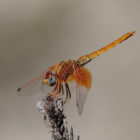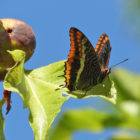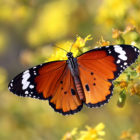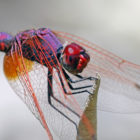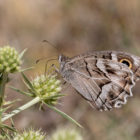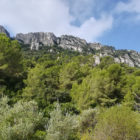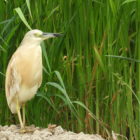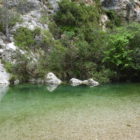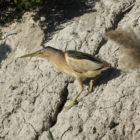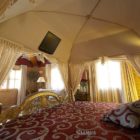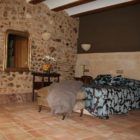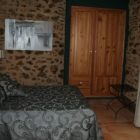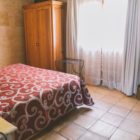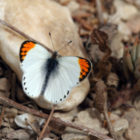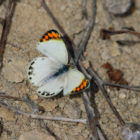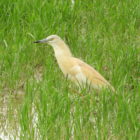Dates & Prices |
BOOK NOW |
Dates: 1st – 7th September 2022 Confirmed departure
Price: £1,195 £995 Special offer for 1 place
Single Room Supplement: £150
Deposit: £150 per person
Price Includes: Accommodation, all meals, ground transport, services of guides & holiday report
Not Included: International travel, travel insurance, drinks & other personal items
Conservation Donation: Local conservation project
Leader(s): Pau Lucio
Group Size: Minimum 3 & maximum 6 guests + 1 leader
Grade: Generally easy walking at a gentle pace.
Holiday Highlights
- Explore a range of coastal and wetland sites, including Albufera de Valencia wetland, Natural Park of El Fondo, Santa Pola salt pans and Pego marshes.
- Enjoy relaxing nights & fine food, in a beautiful early 19th Century rural hotel
- Led by our popular and expert local guide Pau Lucio
- Look for special butterflies such as Two-tailed Pasha, Plain Tiger, African Grass Blue, Desert Orange-tip & Striped Grayling
- Nice selection of dragonflies, including the attractive Orange-winged Dropwing, Red-veined Darter, Violet dropwing, Long Skimmer, Banded Groundling and Lesser Emperor
- Bird highlights include Red-knobbed coot, Marbled duck, Audouin’s gull, Greater flamingo, Glossy ibis, Osprey, Booted & Short-toed Eagle
- Different Raptors and other birds on migration are also possible
- Contribute to a local conservation project
Enjoy a taste of autumn wildlife in Valencia!
Your guides
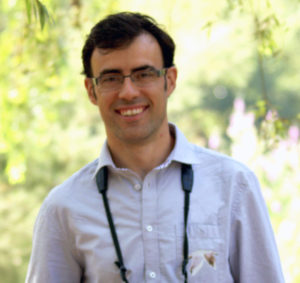
Pau Lucio is a professional wildlife guide in his native Spain and leads tours all over the country. He is also vice-president of the Association of Birding Guides of the Valencian Community. He was born in Gandia (Valencia) and has been interested in wildlife all his life. Pau studied Forest Engineering and got a MSc. in Environmental Science at the Universitat Politècnica de València. He has studied the flora and fauna in the area intensely and extensively. As a result, he has written papers about the ecology of the Mediterranean forest, Audouin’s migration patterns and also related to wing shape differences between northern and southern migratory warblers.
He is currently involved in conservation projects about the importance of Spanish wetlands for migrant birds. He has also set up different butterfly sanctuaries.
When Pau Lucio is not involved in planning trips, most of his time is taken up by studying the butterflies with the NGO Zerynthia (Butterfly Conservation Society). Furthermore, Pau also enjoys photographing wildlife and ringing birds.
Enjoy some autumn wildlife in Valencia!
We’re delighted to offer this autumn break, designed to give you a relaxing 7 days exploring the Valencia region of Spain for a range of interesting wildlife, whilst enjoying the comforts of an excellent quality rural hotel.
Day 1: Arrival
Meet at Valencia airport.
We will spend the afternoon at the Albufera de Valencia wetland, the 3rd largest wetland in the Iberian Peninsula. Our first stop will be to look for Mediterranean Skipper. Later we will move to a reserve which is managed mainly for invertebrates, particularly dragonflies. Here we should see some interesting species including Red-veined Darter, Violet dropwing, Long Skimmer, Banded Groundling and Lesser Emperor. Around the same reserve, we will spend some time looking for African Grass Blue.
The main habitat in the Albufera are paddy fields (14.000 ha) which attracts many waders, egrets and herons. We might see the beautiful Squacco Heron, Glossy Ibis and Purple Heron among many other birds.
Then, we will drive towards our accommodation (50 min journey) at our hotel in Villalonga, Hotel Casa Babel (https://www.casababel.com/)
Day 2: Barx
We will spend the morning looking for the stunning Two-tailed Pasha. This butterfly occurs in small numbers; however we should be able to see it flying in the forest looking for ripe fruit. Wood White, Clouded Yellow, Striped Grayling and Speckled Wood are likely.
Regarding birds we might find some resident birds like Sardinian Warblers and Serin among other finches. In this area a pair of Short-toed Eagle breeds so we might see them among other raptors migrating towards Africa. On the way back to the hotel, we will make a couple of stops to see Orange-winged Dropwing, Keeled Skimmer and Southern Skimmer.
Day 3: El Fondo Natural Park and Crevillente
Today we will have the longest journey (1hr 35 min journey) to get to a very interesting reserves located in the South of Alicante. We will start the day by visiting the Natural Park of El Fondo. This man-made reservoir holds a good number of the globally threatened Red-knobbed coots and it is probably the best place in Europe for watching Marbled ducks (summer visitor). In addition, we will look for Purple gallinules and hope to see a good number of waders and warblers which will be migrating through. There will be different species of dragonflies too. Regarding butterflies, we will enjoy the beautiful Plain Tiger which we will see in good numbers.
After having picnic lunch in the visitor centre, we will visit the hills of Crevillente where we will look for birds like the impressive Bonelli’s Eagles, Hoopoe and Black wheatear among others.
Day 4: Pego marshes and Vall de Gallinera
Pego marshes are one of the many small wetlands spread along the Mediterranean coast. They play a vital role for many migrants as re-fuelling places. We will look for some residents such as Moustached warbler, Glossy ibis, Egrets and Osprey. In addition, we might see Booted Eagle, Kingfisher, Iberian Yellow Wagtail among other species. We will attend a bird ringing session carried out by Pau’s colleagues. This will allow us great views of some skulking birds.
Later, we will visit a mountain stream to look for dragonflies. Some of the species we might encounter are Blue Hawker, the colourful Orange-winged dropwing, Desert Darter, Common Darter and Keeled Skimmer among others.
Day 5: Steppes of Albacete
Today, we will head inland to the steppes of East Albacete (1 h 30 min journey). This Special Protection Area for birds is a wonderful place for birding because traditional farming is still in use. Here some of the birds we might see are Calandra lark, Thekla lark, Stock dove, Stone-curlew, and the heaviest flying bird in Europe, the Great bustard. Males can reach up to 15 kg! We will also look for other specialities like Rock sparrow, Corn Bunting and Little owl. Furthermore, there are temporary lagoons scattered among the steppes where we will look for the endangered White-headed duck and Greater flamingos. In addition, we also expect to see a good number of migrants.
Day 6: Salinas de Santa Pola
Our first stop today will be to see the Desert Orange-tip, an uncommon butterfly species in this region of Spain. Following, we will visit the salt pans of Santa Pola. The area is excellent spot for Terns, and Slender-billed, Audouin’s and Mediterranean gulls. In addition, we will see a good number of waders which use the park as a stopover during the migration. Finally, we will enjoy an impressive resident population of Greater flamingos (few thousands). If time allows, we might stop in a small wetland in route.
Day 7: Departure & transfer to Valencia airport
We will spend the day looking for any target we have missed in the previous days or in the Albufera de Valencia. Later we will return to Valencia airport for departure flights.
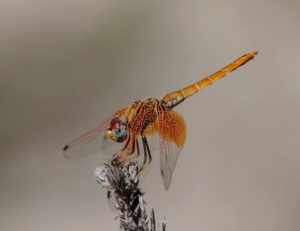

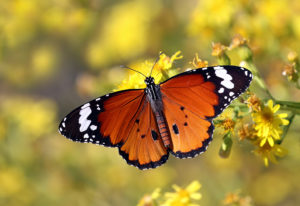
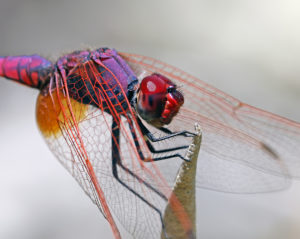
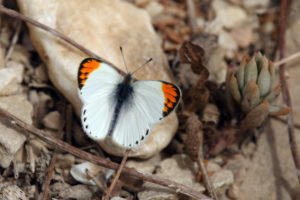
Day 1: Arrival
Meet at Valencia airport.
We will spend the afternoon at the Albufera de Valencia wetland, the 3rd largest wetland in the Iberian Peninsula. Our first stop will be to look for Mediterranean Skipper. Later we will move to a reserve which is managed mainly for invertebrates, particularly dragonflies. Here we should see some interesting species including Red-veined Darter, Violet dropwing, Long Skimmer, Banded Groundling and Lesser Emperor. Around the same reserve, we will spend some time looking for African Grass Blue.
The main habitat in the Albufera are paddy fields (14.000 ha) which attracts many waders, egrets and herons. We might see the beautiful Squacco Heron, Glossy Ibis and Purple Heron among many other birds.
Then, we will drive towards our accommodation (50 min journey) at our hotel in Villalonga, Hotel Casa Babel (https://www.casababel.com/)
Day 2: Barx
We will spend the morning looking for the stunning Two-tailed Pasha. This butterfly occurs in small numbers; however we should be able to see it flying in the forest looking for ripe fruit. Wood White, Clouded Yellow, Striped Grayling and Speckled Wood are likely.
Regarding birds we might find some resident birds like Sardinian Warblers and Serin among other finches. In this area a pair of Short-toed Eagle breeds so we might see them among other raptors migrating towards Africa. On the way back to the hotel, we will make a couple of stops to see Orange-winged Dropwing, Keeled Skimmer and Southern Skimmer.
Day 3: El Fondo Natural Park and Crevillente
Today we will have the longest journey (1hr 35 min journey) to get to a very interesting reserves located in the South of Alicante. We will start the day by visiting the Natural Park of El Fondo. This man-made reservoir holds a good number of the globally threatened Red-knobbed coots and it is probably the best place in Europe for watching Marbled ducks (summer visitor). In addition, we will look for Purple gallinules and hope to see a good number of waders and warblers which will be migrating through. There will be different species of dragonflies too. Regarding butterflies, we will enjoy the beautiful Plain Tiger which we will see in good numbers.
After having picnic lunch in the visitor centre, we will visit the hills of Crevillente where we will look for birds like the impressive Bonelli’s Eagles, Hoopoe and Black wheatear among others.
Day 4: Pego marshes and Vall de Gallinera
Pego marshes are one of the many small wetlands spread along the Mediterranean coast. They play a vital role for many migrants as re-fuelling places. We will look for some residents such as Moustached warbler, Glossy ibis, Egrets and Osprey. In addition, we might see Booted Eagle, Kingfisher, Iberian Yellow Wagtail among other species. We will attend a bird ringing session carried out by Pau’s colleagues. This will allow us great views of some skulking birds.
Later, we will visit a mountain stream to look for dragonflies. Some of the species we might encounter are Blue Hawker, the colourful Orange-winged dropwing, Desert Darter, Common Darter and Keeled Skimmer among others.
Day 5: Steppes of Albacete
Today, we will head inland to the steppes of East Albacete (1 h 30 min journey). This Special Protection Area for birds is a wonderful place for birding because traditional farming is still in use. Here some of the birds we might see are Calandra lark, Thekla lark, Stock dove, Stone-curlew, and the heaviest flying bird in Europe, the Great bustard. Males can reach up to 15 kg! We will also look for other specialities like Rock sparrow, Corn Bunting and Little owl. Furthermore, there are temporary lagoons scattered among the steppes where we will look for the endangered White-headed duck and Greater flamingos. In addition, we also expect to see a good number of migrants.
Day 6: Salinas de Santa Pola
Our first stop today will be to see the Desert Orange-tip, an uncommon butterfly species in this region of Spain. Following, we will visit the salt pans of Santa Pola. The area is excellent spot for Terns, and Slender-billed, Audouin’s and Mediterranean gulls. In addition, we will see a good number of waders which use the park as a stopover during the migration. Finally, we will enjoy an impressive resident population of Greater flamingos (few thousands). If time allows, we might stop in a small wetland in route.
Day 7: Departure & transfer to Valencia airport
We will spend the day looking for any target we have missed in the previous days or in the Albufera de Valencia. Later we will return to Valencia airport for departure flights.
New holiday so reviews to follow later


